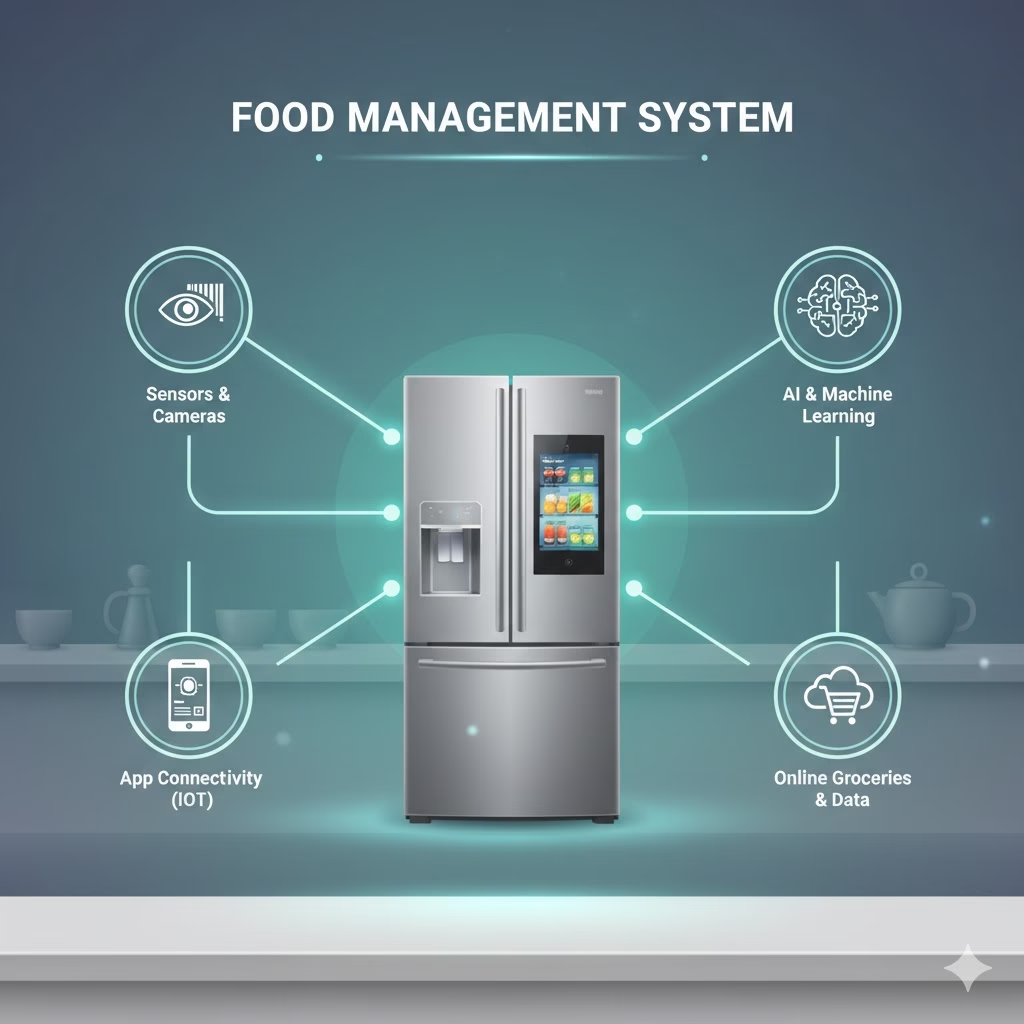
As a home cook and self-proclaimed kitchen gadget enthusiast, I’ve always been fascinated by how technology can simplify our lives – and ideally, make them greener too. My journey into understanding smart appliances began with a simple question: “Can my oven really do more than just bake cookies?” It turns out, the answer is a resounding yes, and often in ways that benefit both our wallets and the planet. Join me as we explore the surprising world of energy efficiency ovens.
How Ovens Are Revolutionizing Energy Efficiency in the Kitchen
The oven is quietly changing. Every appliance we own gets looked at for its effect on the environment and its running cost. Modern ovens—especially those with smart and AI features—are now leading the way in energy efficiency for the kitchen.
These ovens use new technology to cut down on electricity. They reduce food waste and offer a greener way to cook. This change does more than just save money on your power bill. It helps lower your home’s carbon footprint, one perfectly cooked meal at a time.
For many years, the oven was a major power user in the kitchen. It needs a lot of electricity to make and hold high heat. But new insulation, better heating parts, sensors, and artificial intelligence are changing these units. They are becoming surprisingly efficient machines. Let’s look closely at how ovens are becoming more energy efficient. We’ll also show you how to use these new features at home.

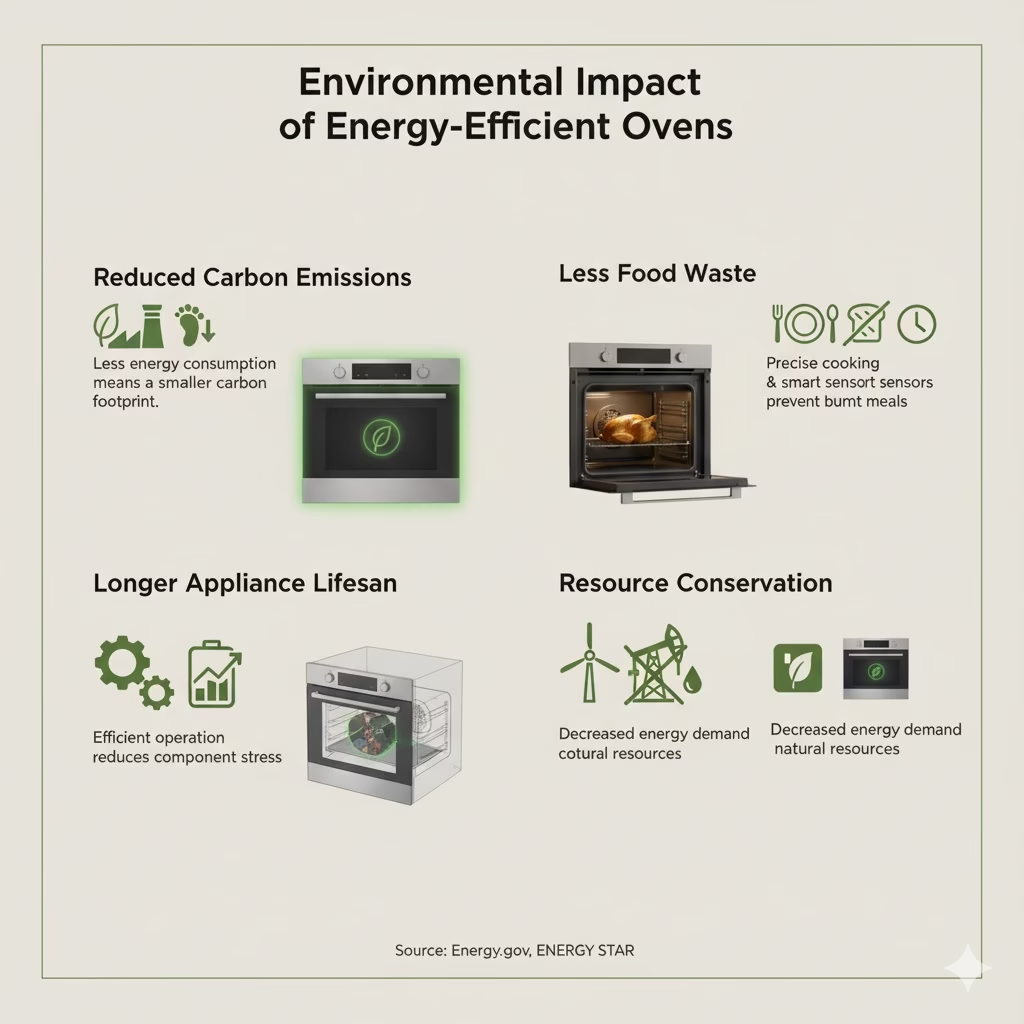

The Base of Efficiency: Better Insulation and Design
Long before we look at the “smart” parts, big changes to the basic design of ovens have helped boost energy efficiency.
How It Works: Newer ovens have much better insulation. They also have tighter door seals than older models. This means less heat escapes the oven box. As a result, the oven parts do not have to work as hard to keep the right temperature. The oven doors often have three or even four layers of glass. These coatings trap heat inside. This keeps the outside of the oven cooler. The inside shape of the oven also helps. Some linings reflect heat better, which saves energy.
How to Do It:
- Buy Newer Models: If your oven is over 10 to 15 years old, its poor insulation is likely using a lot of energy. Buying a new, well-insulated model is the first big step.
- Check Door Seals Often: Even with a new oven, look at the door gasket for damage. A bad seal lets heat escape. This cancels out the benefits of good insulation. Replacing the seal is usually cheap and easy.
- Do Not Open the Door Too Much: Every time you open the oven door, a lot of heat escapes. This forces the oven to use more power to get back to the right heat. Use the oven light and the window to check your food whenever you can.
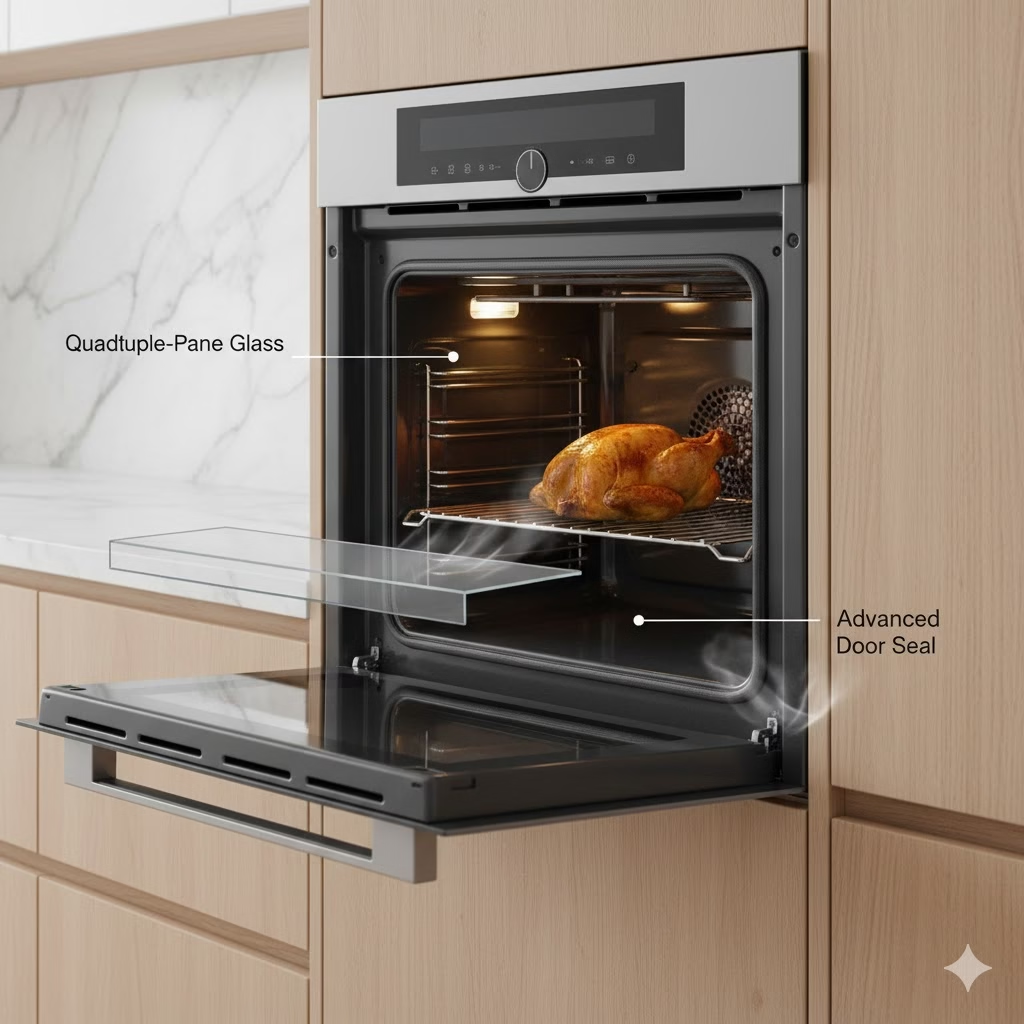
Convection Cooking: Hot Air for Better Efficiency
Convection ovens are not brand new, but their energy efficiency is very important right now.
How It Works: Regular ovens only use heat that radiates from the top and bottom elements. Convection ovens add a fan. This fan blows hot air evenly through the oven box. This even flow of heat means food cooks faster and more consistently. You can often use lower temperatures, too. Because the heat is spread out well, there are no cold spots. This gives you better cooking results and cuts down the cooking time. A shorter cooking time means the oven runs for less time, using less energy overall.
Examples: Most new ovens, even non-smart ones, now include a convection setting. The best models may have “true convection” or “European convection.” This adds a third heating element around the fan. This makes the temperature even more stable and cooking even faster.
How to Do It:
- Use Convection When You Can: Switch to the convection setting for most roasting, baking, and even some broiling.
- Change Times and Temperatures: When you use convection, you should usually lower the recipe’s temperature by $25^\circ F$ (about $15^\circ C$). Check the food about $25\%$ sooner than the regular cooking time.
- Do Not Crowd the Oven: Convection helps cook food evenly. Still, make sure there is room around your dishes. This allows the hot air to move around well.
The Rise of Smart Features: Wi-Fi for Wiser Use
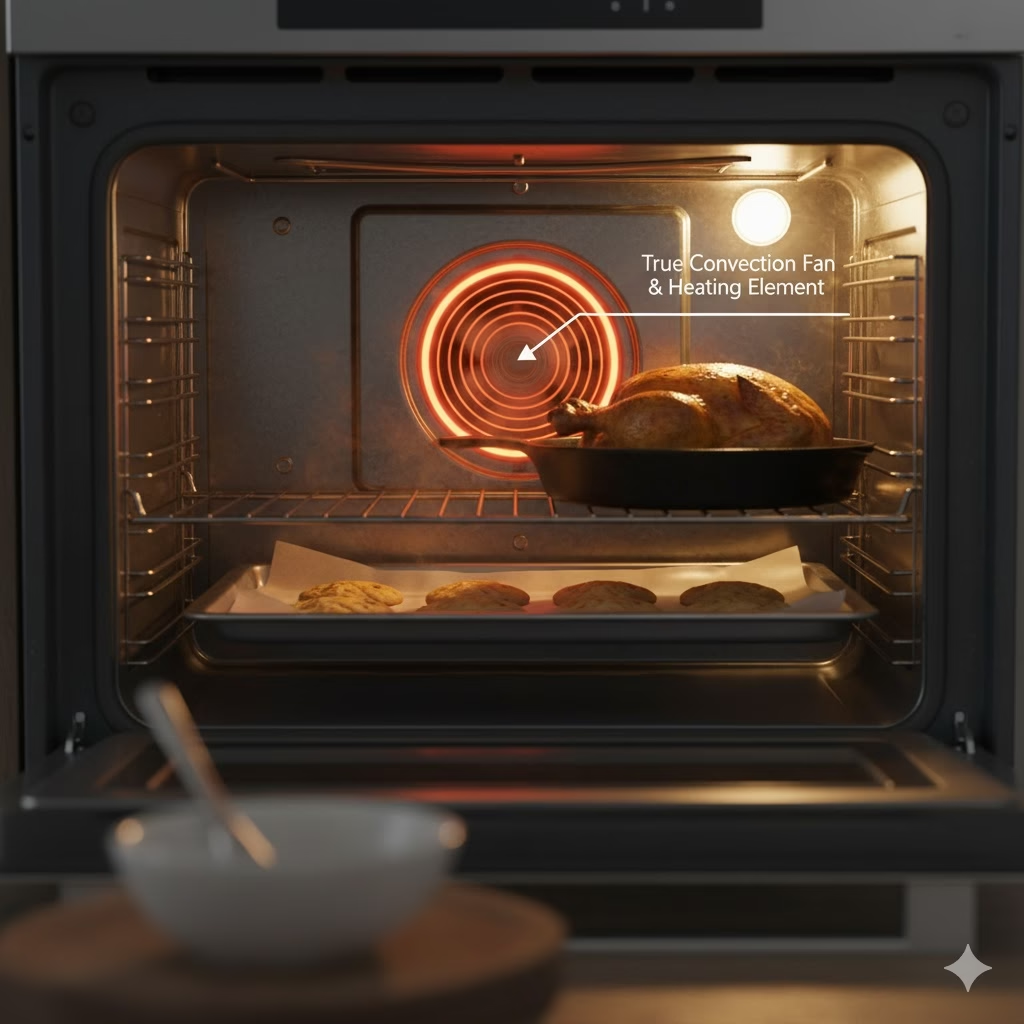
Smart technology has brought internet connection to the kitchen. This gives users better control and knowledge about how their oven works. This directly helps energy efficiency.
How It Works: Smart ovens connect to your home’s Wi-Fi. You can control them with an app on your phone, a voice assistant, or other smart home devices. This connection allows you to preheat from far away. You get precise temperature control and personalized cooking programs. The real energy savings come from watching and managing your oven’s use better.
Examples:
- Remote Control: Did you forget to preheat before leaving work? Start it while you drive home. The oven is not sitting idle waiting for you. It’s ready exactly when you need it, cutting down the total time it is running.
- Recipe Hook-Up: Many smart ovens can download special cooking plans right from recipes. They set the right temperature, time, and cooking mode automatically. This ends the guesswork and the need to cook things again.
- Tracking Tools: Some apps can show you how you use your oven’s energy. This helps you find ways to use it better.
How to Do It:
- Use Remote Preheat Wisely: Do not preheat too early. Only turn the oven on when you know you will put food in shortly after it reaches the right temperature.
- Look at the App Features: Spend time learning the app that came with your oven. Many apps offer features you might not know about that can help you cook more efficiently.
- Connect to Your Smart Home: If you have a smart home hub, connect your oven to it. This allows for complex automation, like turning the oven on when your “dinner prep” routine starts.
The Smart Factor: AI and Sensors for Exact Cooking

Artificial intelligence (AI) and modern sensors are perhaps the most exciting parts of oven energy efficiency. These technologies are moving past simple automation. They are creating truly smart cooking.
How It Works: AI ovens use many internal sensors. These include temperature probes, humidity sensors, and sometimes cameras. They use complex computer programs to watch food in real-time. This lets the oven change its settings as it cooks. It works to get perfect results with the least amount of energy. It can tell when food is done. This stops overcooking and the need to check the food constantly.
Examples:
- Automatic “Done” Check: Some high-end ovens have built-in meat probes. These probes tell you the inner temperature. They can also switch the oven to a “keep warm” mode or turn it off when the food is done.
- Smart Preheating: The oven does not just blast heat until a set temperature is met. AI programs can learn your cooking habits and how the oven holds heat. They preheat more efficiently. They can even guess when you will put food inside.
- Modes That Change: Ovens like the June Oven use inside cameras and AI. They look at the food you put in and suggest the best cooking plan. This stops confusion. It makes sure the most efficient cooking method is picked. It often combines different heat sources, like convection or air fry, very precisely.
- Steam and Sous Vide: Some advanced ovens can inject steam or even cook food sous vide (in water). Steam cooking is very efficient for many foods. It cooks them faster and often at lower temperatures than dry heat. Sous vide uses very low, exact temperatures. For certain dishes, it often uses less total energy than regular methods.
How to Do It:
- Use the Meat Probe: If your oven has a built-in meat probe, use it! This is one of the best ways to make sure food is cooked perfectly. It stops the food from staying in the oven longer than it needs to.
- Trust the Automatic Settings: Many AI ovens have many pre-set programs for different foods. These are usually set up for best results and energy efficiency. Feel free to try them out.
- Think About Multi-Use Ovens: If you are buying a new appliance, look for combination ovens. These can be microwave-convection or steam-convection units. They can do many jobs efficiently. This means you do not need separate, dedicated appliances.
Special Cooking Options and Zones for Targeted Efficiency

Some ovens offer special features that go beyond general smartness. These boost energy efficiency by only heating what is necessary.
How It Works: These features reduce the area that needs to be heated. They also reduce the type of heat used. They focus energy exactly where it is needed.
Examples:
- Ovens with Two Sections: Some ovens have a divider you can take out. This turns one large oven into two smaller ones that you can control on their own. This is very efficient if you are only cooking one small dish. You do not have to heat the entire large space.
- Quick Preheat Modes: This seems odd, but these modes quickly get the oven to the right temperature using max power. Then they switch back to normal use. The total time the oven is active may be shorter than with a slow preheat. This saves energy, especially if you bake often.
- Air Fry Mode: Many convection ovens now have a specific “air fry” setting. This is a very powerful convection setting. It makes food crispy like deep frying. And uses much less oil and often cooks faster than regular baking. It can replace a separate, energy-using air fryer machine.
- Proofing Mode: For people who bake bread, a low-temperature proofing mode gives a steady, warm, moist space for dough to rise. This uses less energy than using a slightly warm regular oven or a less controlled spot.
How to Do It:
- Use the Small Section: If you have an oven with two sections, always use the smaller section for smaller meals or when you only cook one dish.
- Match Pan Size to Food: Use the right size baking dishes. Using a large pan for a small amount of food means more empty space is absorbing heat for no reason.
- Cook Many Things at Once: If you are going to use the oven, try to cook several things at the same time. This makes the most of the heat that is already being made.

Easy Steps for Getting the Most Oven Energy Efficiency
Even with the best oven, how you use it is key to the total energy efficiency.
How to Do It (Simple Tips):
- Do Not Preheat If Not Needed: Many foods, especially those that cook for a long time (like roasts or casseroles), do not need a preheated oven. You can often put them in a cold oven and then turn it on.
- Turn It Off Early: For foods that cook for a long time, you can often switch the oven off 10 to 15 minutes before the food is fully done. The heat that stays inside will keep cooking the food without using more power.
- Use the Right Pans: Glass or ceramic dishes hold heat better than metal. This can let you lower the oven temperature by about $25^\circ F$ ($15^\circ C$) for some recipes. Dark, dull metal pans take in more heat, which makes cooking faster.
- Keep Your Oven Clean: While the self-cleaning cycle uses a lot of energy, a clean oven reflects heat better. Baked-on spills can take in heat, making the oven work harder.
- Put Racks in the Right Place: Put the racks in the correct spot for the best cooking. The middle rack is usually best for even cooking.
- Thaw Food First: Cooking frozen food uses much more energy to bring it up to heat. Thaw food in the refrigerator overnight before you cook it. This will save energy.
The Effect on the World Beyond Power Bills
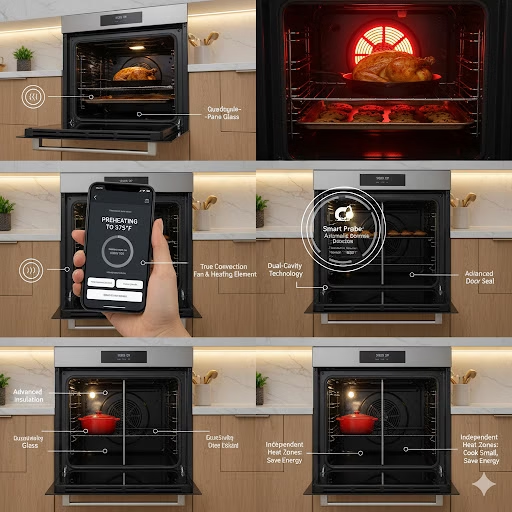
The push for oven energy efficiency is about more than just how much electricity you use. These advances help with bigger environmental goals:
- Less Carbon Pollution: Using less energy means less pollution that causes global warming. This is especially true if your home’s power comes from burning fossil fuels.
- Less Wasted Food: Cooking exactly, with automatic “done” checks, leads to fewer burnt or undercooked meals. This cuts down on food waste. It also saves the resources used to grow that food.
- Longer Life for the Appliance: Ovens that work better may put less stress on their parts. This could mean they last longer. This reduces the environmental cost of making and throwing away old units.
- Saving Resources: By making appliances more efficient, we lower the total need for making electricity. This helps save natural resources.
Choosing an Energy-Efficient Oven
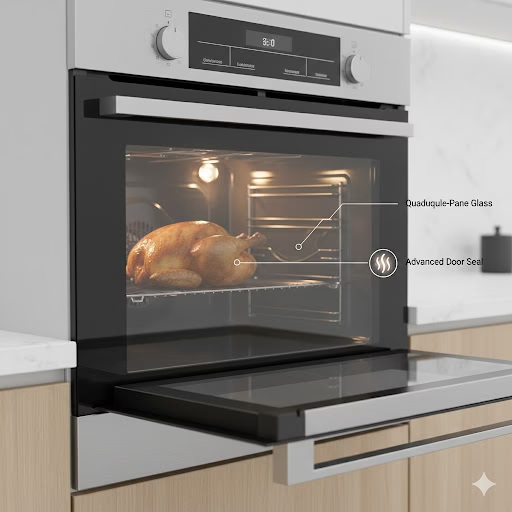
When you are ready to get a new oven, think about these points to get the most energy efficiency:
- ENERGY STAR Label: Look for ovens with an ENERGY STAR certificate. These appliances meet tough rules for energy efficiency set by the government.
- Convection Feature: Choose models that have “true convection” for faster, more even cooking.
- Insulation Quality: It is hard to check this directly. But reviews and product details often talk about strong insulation and doors with many glass panes.
- Smart Features: Decide which smart features you truly need. Remote control, recipe help, and automatic cooking can make your use more efficient.
- Size: Pick an oven size that fits how you usually cook. A bigger oven uses more energy to heat up. If you cook small meals often, an oven with two sections might be best.
The Future is Smart and Green
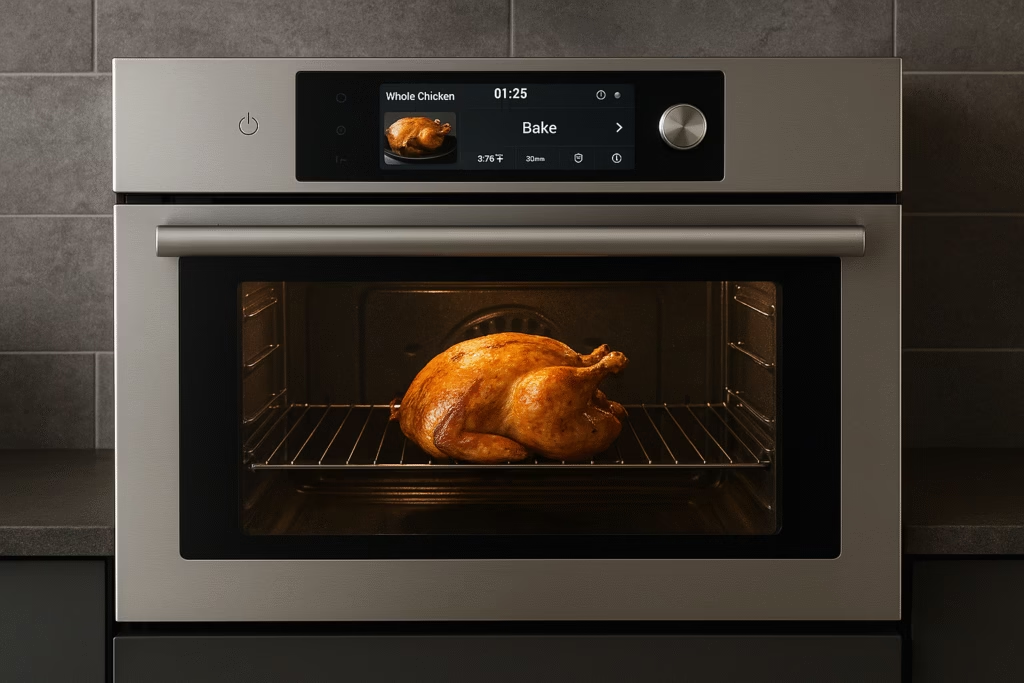
The path for oven technology is clear: they will get smarter, more connected, and focused on being green. As AI programs get better, and sensors become more exact, ovens will do more than just cook our food well. They will also always be watching for energy efficiency.
From knowing when your lasagna is fully baked, to preheating at the best time based on your commute, these appliances are changing. They are going from simple boxes of heat to true cooking helpers. They take care of both your meal and the planet.
Using these new features, along with smart cooking habits, ensures your kitchen stays a place of great food. It will not drain your power bill or hurt the environment. The change in oven energy efficiency is happening now. It asks us all to cook smarter, not just harder.
FAQ Section
Q1: How much energy can an efficient oven really save me?
A1: The savings change a lot. They depend on how old your oven is, how you cook, and the price of electricity where you live. But an ENERGY STAR certified oven can save you a lot of money over its life. It also lowers your carbon footprint by boosting energy efficiency.
Q2: Do smart ovens use more power when they are connected to Wi-Fi?
A2: The power used to keep a Wi-Fi connection in a smart oven is tiny. Most energy is used for heating. The possible savings from things like remote control and better cooking programs are much greater than the small energy used for the connection.
Q3: Is it better to use an oven or a microwave for small jobs to save energy?
A3: For small amounts of food or reheating, a microwave almost always uses less energy than an oven. This is because it heats the food directly, not a big box of air. Only use the oven when you must bake, roast, or brown food.
Q4: How important is preheating for saving energy?
A4: Preheating can use a lot of energy. You can often put food in a cold oven and turn it on for many foods, especially those that cook for more than an hour. For things like baked goods that need exact heat from the start, preheating is needed. But smart ovens can often preheat more efficiently.
Q5: What is the difference between regular convection and “true” convection?
A5: Regular convection uses a fan to move air heated by the top/bottom elements. “True” convection adds a third heating element around the fan itself. This makes sure the air is already hot when it moves around the oven. This leads to faster and more even cooking. It often gives you better energy efficiency.
Q6: Does the self-cleaning mode use a lot of energy?
A6: Yes, the self-cleaning mode uses a lot of energy. It heats the oven to very high temperatures (about $800^\circ F$ to $1000^\circ F$, or $427^\circ C$ to $538^\circ C$). It does this to burn off food bits. Use this mode only when you need to. Consider running it right after you finish cooking while the oven is still warm. This cuts down the time needed to heat it up.
References
- Energy – Kitchen Appliances
- Consumerreports – Save More and Waste Less
Recent Posts

